In the ten years since Byrd Spilman Dewey (https://www.byrdspilmandewey.com) was rediscovered as an important author and journalist in early South Florida, I have made it a quest to find the exact locations of all of her homes in Palm Beach County. There was the grand estate Ben Trovato, where the Rapallo now stands; the Boynton Beach Ben Trovato, at the southwest corner of Boynton Beach Boulevard and Federal Highway; a bungalow in West Palm Beach on Hibiscus Street; and the Palm Beach Ben Trovato, on Seabreeze Avenue in Poinciana Park in Palm Beach.
One, however, had not revealed its location. The Dewey’s first homestead in Palm Beach County was a 76 acre tract (lots 3 and 4) which stretched from what is today 25th Street to 36th Street in West Palm Beach, about one mile inland from the Intracoastal Waterway.
What I did not know is where they built their home on the 76 acres. I did have a clue, from Mrs. Dewey’s book From Pine Woods to Palm Groves. She described the spot where they built their home:
There was a wooded hill overlooking a Lake which bordered our Western shores; on the further side of this Lake, we had a fine view of the cypress trees which guard the entrance to the famous Everglades. By climbing a tree on the wooded hill we also had a fine view of the Atlantic Ocean, with its passing sails and smoke-stacks. After exploring the seventy six acres of our homestead, this hill was chosen as the best building site. Here the sleeping and cooking tents were pitched; and a chicken park was staked off and fenced with woven-wire netting before our own dwelling was begun.
The question was where was this hill? I knew there were hilly areas on that tract; in fact some of the highest points in Palm Beach County are located on the sand ridge that acts like a spine along the entire east coast of the county. I could only guess as to which of the many hills they could have built on. Mrs. Dewey called the house The Hermitage, because it was so isolated; her and husband Fred were essentially hermits!
Mrs. Dewey wrote: “It would hardly be stretching the truth to say, of this woodland home that it was ‘two miles from nowhere.’ To reach the sparse settlement we had to walk a mile, or more, through the winding woods path to the shore of the Sound.”
The homestead file listed The Hermitage as being 25 feet by 20 feet (500 square feet) a modest home by any means. She described it this way:
Our little home consisted of four rooms below; a living-room and a bed-room in front connected by a large archway, and back of these were the dining-room and the kitchen. There was an attic above the two front rooms where we stored various odds and ends; the piles of papers and magazines that are always with us; also, spare sails; and other boat-tackle, dry herbs some of which we had already discovered growing wild in the woods, and the low places near the water; seeds and so forth. The little attic served another most important purpose – we found that, as the summer waxed warm and yet warmer, our attic, with its open window, drew up the heated air and kept the lower rooms always pleasantly cool, even when there was a fire in the kitchen stove.
The Deweys lived at The Hermitage from 1887 until 1890. They cultivated about two acres of land in pineapples, guava, avocados, and had a hen house for eggs. They later bought five acres of land along the shores of Lake Worth, about one mile south of Okeechobee Road (where the Rapallo condominium stands today on Flagler Drive). Here is where they built the grand house named Ben Trovato.
They had bought The Hermitage land for $95; the rate for government land was $1.25 per acre if you didn’t want to wait five years to get it for free. In 1892, the Deweys sold The Hermitage and the land to James B. Clow, a wealthy Chicagoan who was in the plumbing fixture and fire hydrant business.
Another well off Chicagoan, George B. Swift, bought a large tract of land adjacent to the Dewey land (Swift had served as mayor of Chicago). Swift had a large winter home in Palm Beach. These tracts of land became the basis of the Chicago Pineapple Company, run by the sons of Clow and Swift.
Eventually, due to pests, drought, and competition from Cuban pineapples, the Florida pineapple industry went bust. The West Palm Beach land tracts of the Clows and Swifts changed hands over the years until it became a part of the vast 1925 Northwood Development, being a part of plat 7. It was subdivided as an industrial area with a train spur from the Seaboard Coast Line Railway.
Recently I found a video on Youtube (https://www.youtube.com/watch?v=2pDsQl7rQmQ) that was an overlay of an 1883 map and modern aerial photography that gave the viewer a unique perspective on how much our shoreline and inlets have changed over the last 140 years. The 1883 map was a United State Coast and Geodetic map of the area between Jupiter Inlet and the foot of Lake Worth (the body of water) in Boynton Beach. I wanted my own digital copy of this map, so I started searching the Internet. And it was here that my answer was found as to where The Hermitage stood.
I found the 1911 annual report of the Coast and Geodetic Survey. The book has an appendix that gives great detail on the Florida east coast. In the days before GPS, satellites and aerial photography, geographers and cartographers could still draw very accurate maps and measure distances using the science of triangulation and mathematics of trigonometry.
Along the entire east coast of Florida, principal and supplementary ‘points’ were designated. These points were typically physical landmarks such as hills, Indian mounds, lighthouses, hotels or even private homes (given that there were so few along the east coast). When a point was designated, it was marked with a large stone, a coquina pillar, or an oak piling. Below that the surveyor would bury a glass bottle with a stopper and copper nail, and two 30 inch terra cotta pipes filled with concrete. Marks were also carved into nearby pine trees or cabbage palms.
I found this fascinating and began to wonder how many of these markers still exist, buried, or had been discovered and discarded as junk. Each of the points was also designated with its coordinates as measured by latitude and longitude in the survey book, which means these exact points can be found today. Some of them along the Indian River had unusual names like “Two Dollar Bluff”, “Hole in the Wall” and “Eggs.”
Then I came to a point called “Worth”:
My eyes lit up – CLOW, and SWIFT! I knew this was the hill I had been looking for as the site of The Hermitage. I am guessing that The Hermitage itself became the house of Hager Kelley. So from the table listed in the survey book, I had the exact latitude and longitude of the location of the survey point called Worth – it was between 26th and 27th street in West Palm Beach, now an empty lot in an industrial park. When the land was developed, this high hill must have been bulldozed flat. It had existed as a survey landmark since 1883, as it could be seen from the Intracoastal.
Of course, an industrial park is not much to look at. Many old quonset hut buildings among a collection of businesses. Nobody knew this history as it was buried in an old 1911 survey book and Mrs. Dewey’s book From Pine Woods to Palm Groves. But it had been a beautiful, unspoiled forest of sand pines, slash pines, and Florida wilderness at its best.
Mrs. Dewey wrote:
The Hermitage had been so completely our home, so really our own creation, evolved from wildest nature, that it was harder to give up than was any other we had ever left. We had found it an unbroken forest, tied together with wild vines and undergrowth and we had made it a home blest with a charm of real comfort and beauty.
I took down the white draperies from the windows; and rolled up the crimson rugs with feelings of regret tempered by the hope that events might so shape themselves as to let us return some day. We had already packed the books, Julius and I together, in boxes of convenient size for handling. I took down the pictures, and packed the bits of statuary, souvenirs, brought from our city home. Thinking today, of this dismantling, brings the inviting living-room of The Hermitage vividly to mind. Its fluffy white window-draperies; the artistic bits; touches of crimson; shelves of books and the tall jars of branches and wild grasses.
And so as the piece of land now stands strewn with concrete rubble, its history now known. Its natural beauty is perhaps lost to a man-made landscape, but imagination allows us to make it all real again.
You can buy Byrd Spilman Dewey’s book From Pine Woods to Palm Groves – from Amazon – https://www.amazon.com/Pine-Woods-Palm-Groves/dp/1530402638/
All of Mrs. Dewey’s works are available in the volume – The Collected Works of Byrd Spilman Dewey – from Amazon – https://www.amazon.com/Collected-Works-Byrd-Spilman-Dewey/dp/1494892332/




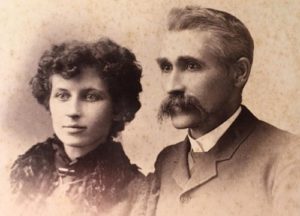
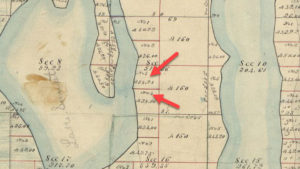
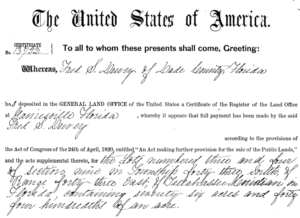
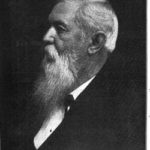
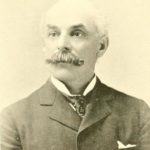

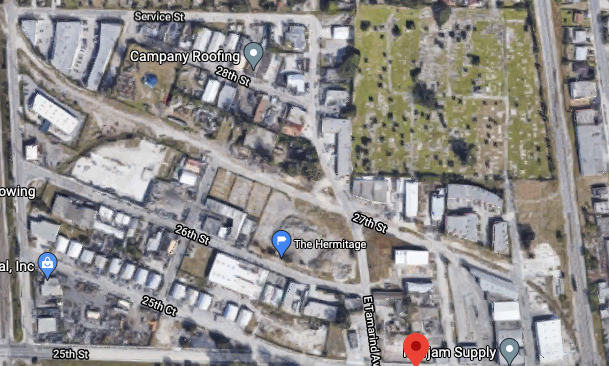
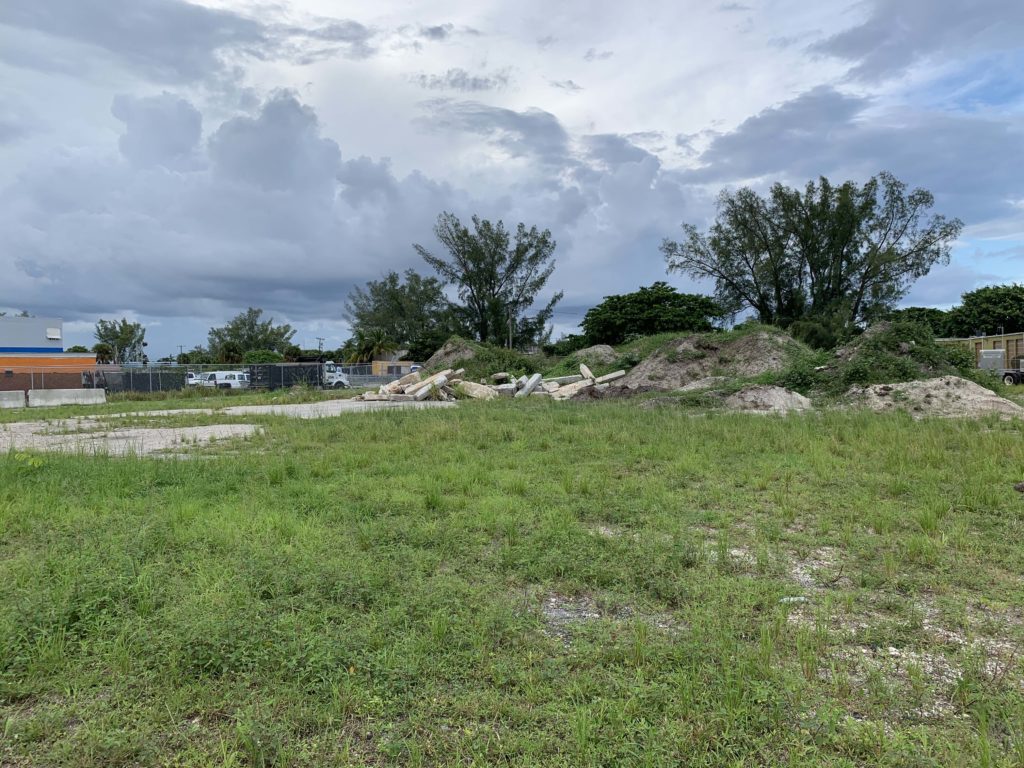
Ginger,
Fantastic work! I’ve been driving around that locale trying to imagine exactly where The Hermitage may have been ever since I read your book on The Deweys. This is amazing! Thank you again so much for uncovering this long forgotten saga of early West Palm Beach pioneer life.
Hi Ginger,
What a great piece of work you’ve created, again! Fantastic research. I wonder if the current landowner would allow a marker to be erected in honor of the Dewey’s?